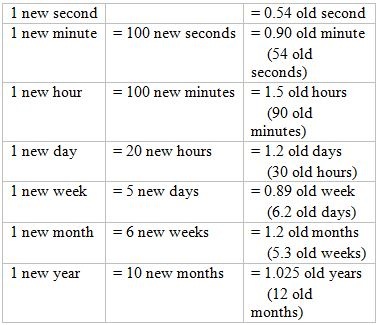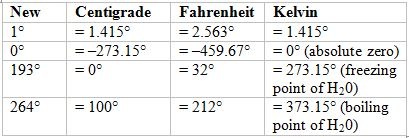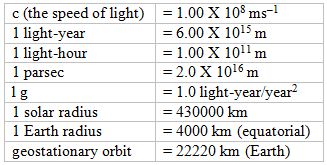Echoes of Earth (43 page)
Authors: Sean Williams,Shane Dix

That gave the remaining humans a relatively brief time span in which to contact them, or at least to make the most of the gifts they left behind. There had to be some way to get their attention.
Even if they didn’t, for better or for worse, life would go on. Hatzis couldn’t blame her engram for seeking a happier alternative. Although there were presently few for the occupants of
Arachne,
their number of options had increased after only two weeks of exploring. They had found survivors; they had found abandoned beachheads that could serve as a base, if needed; they weren’t alone.
And that was why, perhaps, she was beginning to think that she wasn’t as unfortunate as she had believed after the destruction of the Vincula. Never had things seemed darker than when she had gone to Io in the hope that one of the povs she had warned might have survived and gone there—and heard nothing. But even on her own, she was self-sufficient within herself and capable of adjusting to change. It would have been easy to turn her back on the engrams and rebuild from scratch on her own, but the simple fact was that it could be simpler with their help. They had resources she did not; even with the hole ship at her sole command, she would have faced a tough time making any progress at all, at first. This way, she would have allies, at least for a while, if not permanently. And it wasn’t impossible that their goals would one day be the same. If she could find a way to get around their flaw, they might form a sort of community resembling something Sol would have been proud of. There was still a chance, as her mother might have put it, of turning their weakness into strength.
She stayed in the background as Alander evaded Mohler’ s last question—”And if someone else comes?”—and wrapped up his final dealings with Mohler, preparatory to moving on. Despite her connection to one of their crew members, the
Davies’s
survey team still regarded her as something other. And she was; there was no denying that. If they were afraid that she might exploit them, they were absolutely correct. Her plans to bootstrap the engrams to a higher stage of human evolution, using Spinner or Spike technology, as necessary, might not accord with the plans of at least one of them.
She smiled to herself. Alander had noticed the slight change within himself, but he seemed to have accepted the lie that she hadn’t tampered with him while he was unconscious. Perhaps he thought it had come from within himself. If so, that was good; that was what he was supposed to think. And besides, in a sense it was true. All she’d done was randomized the fine-tuning of some of his responses, so he wouldn’t be locked into old or new destructive patterns, trapped in stifling regularity. Like the beating of a living heart, he needed a touch of chaos to make him truly live. No one could predict, now, exactly what he would be—even her—but it seemed to be helping.
And he would always have his memories. They all would.
For whom?
If her engram ever asked
her
that question, she knew what she would say. There was only one answer to that question, even if it was different for every person who asked it.
For me
, she would say.
Always for me.
APPENDIX 1
The Adjusted Planck Standard
International Unit
After several notable mission failures in the late twentieth and early twenty-first centuries, an attempt was made for the United Near-Earth Stellar Survey Program (UNESSPRO) to develop a single system of measurement to prevent conflict between data or software from nations contributing to joint space projects. A working group was established in 2043 to examine the issue, drawing on expertise within both scientific and political communities. Two of the main criteria of the working group was that such a system of units should be as similar as possible to existing systems, in order to ease the transition between them, and that it should be as independent of arbitrary criteria as possible. That the system would be decimal was a starting assumption.
The working group chose Planck units as an early starting point. These values are based on fundamental constants of the universe and thus make a good foundation for a system of units. The basic Planck measures for mass, length, and time are:

These values are too small to be useful for everyday measurements. One Imperial inch would be equivalent to over 157 billion quadrillion quadrillion Planck meters; a thin person might be alarmed to discover that they now weighed almost three trillion Planck kilograms; one old hour would drag on for over a trillion quadrillion quadrillion
quadrillion
Planck minutes. Clearly, these units would not be suitable either as a mission standard or for general usage.
The solution was to apply a simple fix to each unit, bringing them into more familiar territory. The
Adjusted
Planck second was simply derived from the “pure” Planck second by multiplying it by 1043. The other twp base units were derived in a similar fashion. Thus:

All other fundamental units (electric current, magnetic flux, energy, etc.) can be derived from these three units plus a number of other universal constants such as
e
(the magnitude of charge on a single electron) and the Boltzmann constant. Since the layperson is most likely to encounter the units of mass, space, time, and temperature, we will restrict our discussion mainly to these four units.
1. Time
The length of a second, along with the number of seconds in a minute, the number of minutes in an hour, the number of hours in a day, the number of days in a week or a month, and the number of months in a year, are
all
arbitrarily determined figures. They are not fixed by nature. The only two units of time that could be considered to be relatively permanent (for humans in the relative short term) are the rotational period of the Earth and the sidereal year. These two durations were key considerations in development of the Adjusted Planck time scale, although neither were considered essential for a system of time measurement intended primarily for use on missions to other solar systems, upon which relativistic effects would play havoc with calendars.
As the following chart shows, the new scale of time measurement bears a strong resemblance to the old: The new minutes and years are particularly close, and days, weeks, and months are not radically removed, either. The division of minutes and hours into 100 equal portions facilitates more intuitive timekeeping; a day of two ten-hour halves preserves a sense of familiarity without sacrificing practicality; ten months of six five-day weeks allows great flexibility when it comes to scheduling rosters and planning in the medium term. Nations used to decimal measurements in other areas would, it was assumed, adapt naturally to the new scale, while those unfamiliar with them would still find “natural” time periods more or less unchanged.

It is true that over time the year as recorded by the Adjusted Planck method (which was adopted by UNESSPRO on 1/1/2050, the midpoint of the twenty-first century and projected launch date of the first crewed interstellar mission) would drift from that recorded on Earth. As mentioned above, however, this was considered immaterial for missions to other solar systems. Adjustment is readily made between the two calendars. The need to provide space-going humanity with a practical method of timekeeping ultimately outweighed the need to maintain an impractical terrestrial tradition.
2. Space
While the Adjusted Planck decimal time scale was perhaps the most contentious issue facing the working group, the issue of measuring distance, area, and volume was considered no less important since a handful of contributing nations—notably the United States of America— had still not adopted a metric system of measurement. Although the change to metric was widely considered inevitable in the long term, the following compromise was agreed upon because of its congruence with old units.

The Adjusted Planck meter is still considered by many to be too large for everyday use, but its derived unit, the decimeter has many practical applications. The centimeter, falling neatly between the old centimeter and the inch, has also been touted as a compromise between the two systems. But the similarity between the old mile and the new kilometer and the new liter and the old gallon—plus a number of other convenient measures arising naturally out of the figures (see point 4)—convinced the U.S. delegates that to change would be advantageous.

3. Mass, Current, and Temperature
Once measures for space and time had been accepted, the fundamental units of mass, current, and temperature were foregone conclusions. The mantra that five old pounds equals one new kilogram was concocted to ease the transition for Imperial users. Confusion between Fahrenheit and Celsius scales was already common, especially when combined with the shifting zero arising from scientific usage of the Kelvin scale. The new scale, with its base set firmly on absolute zero, was adopted alongside the others to ensure congruity between data sets.

1 new ampere = 2.972 old ampere

4. Contributing Factors
Adopting an entirely new set of unit measurements is nothing to take lightly. The working party took many considerations into account, one of them being inelegance. This property, although ill defined, is a factor in the acceptance of any novelty, be it a scientific theory, a fashion of dress, or a style of writing. The simple annotation of several frequently used constants in Adjusted Planck units contributed to the decision to adopt them. For instance:
